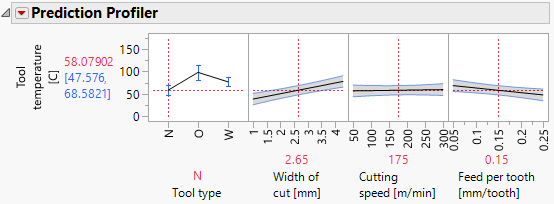The Profiler is a powerfull tool in JMP and widely used for the analysis and interpretation of Design of Experiment models.
To make prediction about future runs, the uncertainity of a model has to be considered. However, JMP is currently limited to confidence intervals, which only allow to make predictions about the range where the true mean falls into. Prediction and tolerance intervals on the other side would extend this so single runs or even for a poportion of a population.
Other software tools such as DesignExpert offer these options already for years and I guess many other JMP users would appreacitae such an option in one of the future JMP versions.
